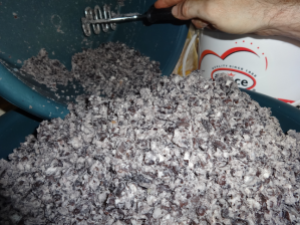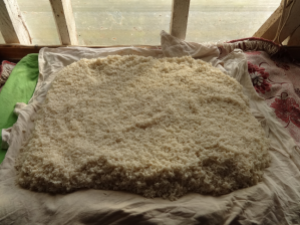 Hello Everyone!! I am back in top form and promise that there will be no complaints today! Many thanks to the readers (namely, Erin and Adriana) who wrote back with a positive word and encouragement. Thanks to Gnome’s Mum for looking at 9 pages and the flurry of visitors after last night’s post. We indeed felt that life was worth living again. 😉
Hello Everyone!! I am back in top form and promise that there will be no complaints today! Many thanks to the readers (namely, Erin and Adriana) who wrote back with a positive word and encouragement. Thanks to Gnome’s Mum for looking at 9 pages and the flurry of visitors after last night’s post. We indeed felt that life was worth living again. 😉
In a bid to increase our Stats, Gnome kindly wrote a post earlier on Ballistics…Hmmm…I am sure everyone stopped whatever they were doing to look at this must-read! Gnome reveals all in his mind-blowing revelations on pellets! Just out of interest, I don’t give Gnome any pocket money for his pellets and so he funds his pass-time through coconut products. So, if you have bought any coconut cream, water or flour, you have helped Gnome out.
 Gnome says, “Buy more of my coconuts!!”
Gnome says, “Buy more of my coconuts!!”
Because it is a lot hotter, we have not been feeling so hungry hence the reason for less recipe posts. However, I thought it would interesting to let you know what we had for lunch today. In our last trip to Belize City, we stopped by the Taiwanese store to buy some goodies…interesting that when we think of buying yummy treats we always go for Chinese or Japanese food. We found some short grain rice (the kind that you use to make sushi), nori seaweed and stinky tofu.
Today, I boiled the sticky rice in our coconut cream…yes, the one that we sell in little bags! I also added whole black peppercorns to spice it up a bit. I toasted the nori flakes in a skillet and I brought out the stinky tofu.

The vegetable featured on the top right is Kun Batz. This is a wild passiflora vine which grows voluntarily in cleared areas. This plant produces fruit which can be eaten green like a vegetable; here I have cut it into pieces, steamed it and added soya sauce.
With plenty of vitamins and minerals from the sea-weed and B Vitamins from the stinky tofu, there was no need to include meat into the meal today. It was yummy!! Hooray for smelly (sorry, I mean fragrant) Chinese food!
Some pictures of Kun Batz (This is the Ketchi Mayan name):



Here in Belize, the Mayans prize this fruit considerably and like to eat it in its ripe form. Once ripe, the flesh turns yellow, spongy and inedible. The pulp around the seeds is eaten and has a fruity floral taste which is esteemed by the people here. It can eaten out of hand or used to flavour cool drinks. It is very similar to the giant granadilla (Passiflora quadrangularis).
Good Evening everyone!! May all our lives become so simple that Blog Stats become the most important thing!!





















































